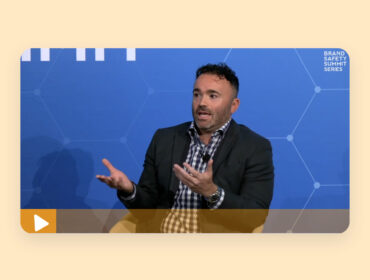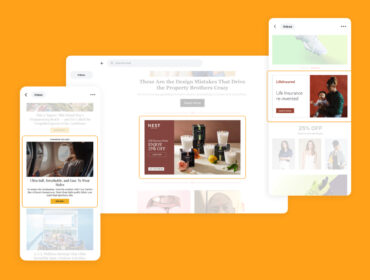What to expect in 2022, with Helene Parker
The programmatic landscape is evolving — and fast. But aside from the deprecation of third-party cookies, what are we seeing in the way of change, and what should marketers be focusing on in the months to come?
Recently, LiveIntent CMO, Kerel Cooper, and SVP of product marketing & GTM strategy, Jessica Muñoz, sat down with Helene Parker, founder and chief programmatic sensei of Helen Parker Consulting, to talk about the tectonic shifts in the programmatic landscape.
Prioritize education
In the programmatic space, three channels are high on Helene’s must-watch list: mobile advertising, Connected TV (CTV), and audio advertising. But while their growth is exciting, they also underscore the need to prioritize programmatic education. Helene believes that when it comes to education and making sure teams are up to speed on programmatic solutions, “the industry is still lacking.” She points to one survey of programmatic marketing “ninjas” that found 54% of them say they could use more training but aren’t always getting it.
With that in mind, Helene advises agencies and brands to normalize training and offer employees the chance to grow individually within a team. “In our industry, things are always changing, right?” she says. “So to normalize training and education means to also stay on top of the changes as they happen.” She adds that while DSP and adtech support teams can help, marketers need to understand the fundamentals of programmatic and know how to use solutions and technology to their advantage.
Leverage new channels (and don’t forget to test)
The opportunities don’t end there. As noted by Kerel, platforms like CTV and TikTok provide advertisers with new channels for engagement and open the doors to new formats. But before they can leverage those, marketers must first know where their audience is.
“It’s not only about turning the consumer into a customer; it’s about turning that consumer into an advocate of your brand,” Helene says. “And sometimes (marketers) just stop at the customer portion and forget the advocacy.” It’s important, therefore, to analyze your target audience and determine where and how they’re engaging with digital media.
“Do your research, invest in research tools, invest in technology that allows you to track, measure, and capture where they’re consuming the most media — and then, based on that, you pull your strategy.“
Helene Parker
Email is back
The recent resurgence of email marketing is always worth exploring, and Kerel and Jessica asked Helene why email is so popular again. The takeaway? Email is appealing because it allows people to consume content without the noise. Unlike the cluttered social media space, inboxes are home to content that consumers have asked to receive, giving email more value.
However, Helene believes that email was somewhat abused by the retail industry in the past, which led to information overload. Newsletters should contain useful, digestible information, and according to Helene, they’ve always been “an excellent strategy for certain campaigns.” Since email is such a personal touchpoint, though, marketers need to keep frequency under control.
Data strategy
A conversation about changes to the programmatic landscape wouldn’t be complete without a discussion about data and how best to leverage it. While we still have some time to prepare for the third-party cookie deprecation of 2023, marketers need to capitalize on these months to make sure they’re fully prepared.
Google’s decision “gives us more time to continue testing and have more relevant data-driven answers or solutions,” Helene says. “Reach out to (publishers), reach out to vendors, reach out to similar brands. Build a consortium that is going to be able to support that open communication and that open sharing of knowledge. This should be an opportunity for us to succeed in a few months or a year from now…so we should act on it now.” Remember, consumers don’t want a world without advertising; they just want messages to be more relevant.
Personalization is a must, Helene says.
“You cannot generalize a message anymore. You cannot serve a message everywhere to anyone on different platforms expecting a certain level of performance back. So definitely personalize a message, the content, and everything else.”
Helene Parker
Looking for more Real Time Banter? Check out our archives for additional interviews and critical insights.


